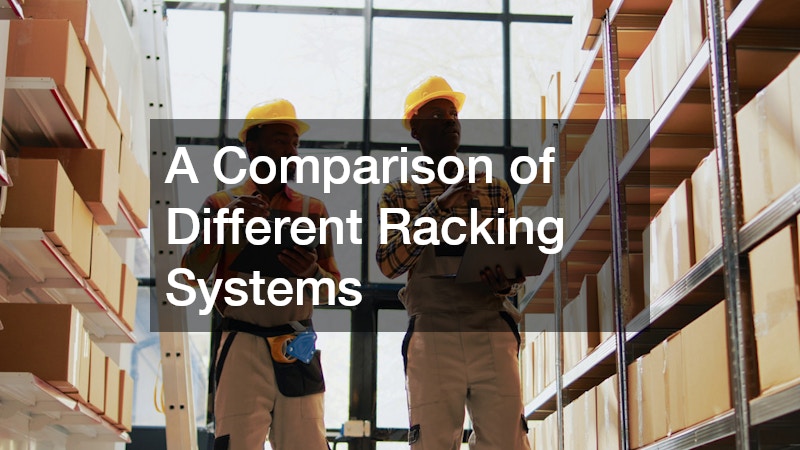
A Comparison of Different Racking Systems
Choosing the right racking system is one of the most important decisions a warehouse or distribution center can make. The right setup can improve storage capacity, streamline workflow, and enhance safety. With multiple designs available, understanding the differences between each type of racking system is crucial for maximizing efficiency and return on investment. This comparison will explore the most common options, their advantages, and their ideal applications.
Pallet Racking System
A pallet racking system is one of the most widely used storage solutions in warehouses. It is designed for holding palletized goods, making it ideal for high-volume storage needs. Standard pallet racks allow for direct access to every pallet, which simplifies order picking and inventory control. They can be adjusted to fit different pallet sizes and can be extended vertically to take advantage of warehouse height. However, pallet racks require adequate aisle space for forklifts, which can limit total storage density.
Drive-In and Drive-Through Racking System
Drive-in and drive-through racking systems are designed for maximum storage density. In a drive-in racking system, forklifts enter the structure from one side to store and retrieve pallets, following a “last-in, first-out” (LIFO) method. Drive-through racks allow access from both ends, enabling “first-in, first-out” (FIFO) rotation. These systems are perfect for storing large quantities of similar products, but they require careful forklift operation and offer less selectivity than standard pallet racks.
Push-Back Racking System
The push-back racking system stores pallets on wheeled carts that slide along inclined rails. When a pallet is loaded, it pushes the previous pallet back, and when it is removed, the next pallet rolls forward automatically. This system offers higher storage density than standard pallet racks while maintaining selectivity, as each lane can store a different SKU. However, push-back racks are typically more expensive to install and maintain.
Flow Racking System
A flow racking system, also known as a carton flow or pallet flow rack, uses gravity rollers to move items from the loading side to the picking side. Pallet flow racks are ideal for FIFO inventory management, making them well-suited for perishable goods. Carton flow racks, on the other hand, are designed for smaller items in order-picking operations. These systems improve picking speed and reduce travel time but require careful product compatibility checks to ensure smooth flow.
Cantilever Racking System
The cantilever racking system is specifically designed for storing long, bulky, or irregularly shaped items such as lumber, pipes, or steel bars. It features arms extending from a central column, providing easy access without vertical obstructions. This type of racking is flexible and easily adjustable, but it is not suitable for palletized goods and requires specialized handling equipment.
Mobile Racking System
A mobile racking system is mounted on motorized bases that move along tracks in the warehouse floor. This allows racks to be compacted together when access is not needed, eliminating multiple aisles and increasing storage capacity by up to 50%. When access is required, the racks can be moved apart to create an aisle. While mobile racks maximize space efficiency, they involve higher upfront costs and require regular maintenance to ensure smooth operation.
Mezzanine Racking System
The mezzanine racking system takes advantage of vertical space by adding an elevated platform above existing storage. This creates a second level for storage, office space, or order processing. Mezzanine racks are ideal for facilities with limited floor space and can be customized to support various load capacities. However, they require careful planning for weight distribution and access points such as stairs or lifts.
Choosing the Right Racking System
When selecting a racking system, several factors should be considered, including available warehouse space, product type, inventory turnover rate, and budget. High-density systems like drive-in, push-back, or mobile racks are best for storing large quantities of the same product, while selective pallet racks or flow racks are better for operations that require frequent access to multiple SKUs. For specialized storage needs, cantilever or mezzanine systems may offer the most practical solution.
Every warehouse has unique storage requirements, and the right racking system can make a significant difference in efficiency, safety, and cost-effectiveness. Whether you need quick access to a wide variety of products or maximum storage density for uniform goods, there is a racking option that can meet your needs. By comparing the strengths and limitations of each racking system, warehouse managers can make informed decisions that optimize both space and workflow.

